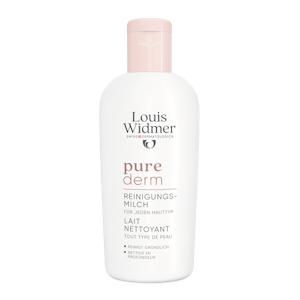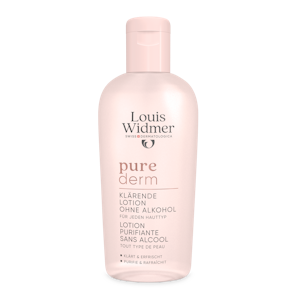Skin redness
Main page:Skin topics
article.category:Skin Diseases
Skin redness, rosacea and couperose on the face can become chronic conditions. Find out more about the causes, treatment options, relevant active ingredients against skin redness and when they become pathological or even an indication of chronic skin diseases such as couperose and rosacea.
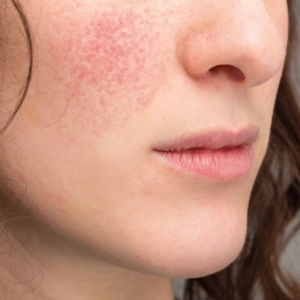
Redness and hypersensitivity occur in pairs
The skin, our largest organ, mediates between our inner life and the environment. The nerve cells and the skin's protective barrier with the associated skin microbiome react sensitively and immediately to stress, in whatever form it manifests itself. Sometimes the skin's protective barrier, including its microbiome, no longer adequately fulfils its protective functions: harmful and irritating substances reach the skin unhindered and cause visible redness and noticeable irritation.
Triggers for hypersensitive skin can be certain cosmetic ingredients (often fragrances), chronic lack of sleep, but also climate fluctuations. In short: a stressful lifestyle or extreme fluctuations in the environment usually have a negative impact on the skin.
The good news: Sensitive skin prone to redness does not have to be a permanent condition. The skin and the skin's protective barrier can regenerate by eliminating irritating factors, changing your skincare regimen, lifestyle and diet. Redness and feelings of tightness subside again – optimised skin care plays an important role in this.
When redness becomes a chronic condition
When blood flows through the blood vessels, they dilate and then contract again - this is a normal, physiological process. A rosy, well-circulated complexion is even considered a sign of freshness and health – e.g. after a walk in the fresh air.
With sensitive skin that is prone to redness, dilated veins can appear at a young age. With increasing age, couperose can occur in any skin type due to the skin's natural loss of elasticity and elasticity. The vessels are no longer able to contract completely. The fine vessels can even rupture if the skin's self-healing powers are no longer sufficient. Visible red patches and fine reddened vascular structures form and persist over time. It is important to know that couperose can be the precursor to rosacea.
Couperose can be visually disturbing – on the other hand, it often results in reduced skin comfort: the skin in the affected areas itches, tightens and burns – this is an indication of increased reactivity of the skin's nerve endings. The skin becomes dry and sensitive.
Typical for sensitive, reddened skin with couperose:
- Visible fine skin vessels (redness)
- increased sensitivity of the nerve endings in the skin (sensitivity)
- dry skin with a weakened skin barrier (permeability, weakened microbiome)
Rosacea
Rosacea is a chronic inflammatory skin disease that occurs in episodes and whose main symptom is facial redness. The inflammation that occurs leads to the formation of nodules and purulent pustules.
The skin disease is characterised by sudden and diffuse redness on the cheeks, chin, nose and forehead – papules and pustules can also form. Deeper layers of the skin are affected than with couperose. A complete regression does not usually take place. There are permanent changes in the skin and the underlying tissue.
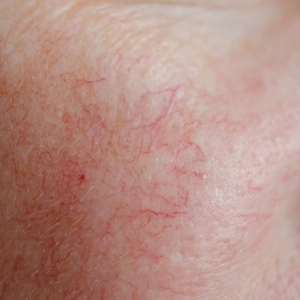
Typical signs and stages of rosacea
Preliminary stage, also known as couperose
- Short-term redness, so-called flushing, which subsides again
Stage 1: Persistent redness
- Long-lasting redness, particularly around the nose, cheeks, forehead and chin and visible, dilated blood vessels
Stage 2: Permanent redness and inflammatory lesions
- Additional formation of papules (nodules) and pustules (pus blisters)
- Burning or stinging pain of the skin
- This subtype is sometimes misdiagnosed as acne
Stage 3: Permanent redness and thickening of the skin
- In advanced stages, the skin may thicken, especially on the nose (rhinophyma)
As rosacea is a chronic condition, care usually requires a long-term approach and working with a dermatologist to achieve optimal long-term results and stop the progression of rosacea.
Causes: What triggers redness, couperose and rosacea?
There is still no 100% consensus among experts on the causes of couperose and rosacea. It is assumed that genetic factors, immune reactions, vascular dysfunction and environmental factors play a role. Current research is also focussing on the skin's microbiome, which is imbalanced in rosacea – certain pathogenic bacteria multiply more than others.
Typical triggers for redness, couperose and rosacea
- Food: for example alcohol, hot spices but also hot drinks such as coffee
- Unhealthy lifestyle such as physical exertion, stress and nicotine
- External factors: extreme temperature fluctuations (both cold and heat) and strong sunlight
- Sweat during workouts
- Medication that has a dilating effect on the blood vessels
- Cosmetic intolerances, such as fragrances
What helps with redness, rosacea and couperose?
The treatment of rosacea depends on the stage. As a basic therapy, the above-mentioned trigger factors should be avoided and a non-oily, well-tolerated sunscreen should be applied daily. A combination of topical creams is also recommended – optimally tolerated cosmetics are used, which may also contain balancing green pigments. Antibiotics, anti-inflammatory medication and, in some cases, laser therapy/IPL can also be used at a later stage.
Care tips and accompanying therapy
- UV protection: As the sun is a typical trigger, the skin should be protected daily with a high sun protection factor - ideally UV 50.
- Mild cleansing with lukewarm water is recommended for skin care. Then gently pat the face dry, do not rub. Washing lotions should have a slightly acidic pH value (<7). Exfoliants, alcohol, menthol and fragrances should be avoided.
- Special pigments conceal redness and make those affected feel better.
- Products for sensitive skin with light textures that have a low oil content should be used.
To avoid
- Peelings or microdermabrasion
- Irritating active ingredients such as vitamin A acid
- Perfumed skin care products
- Potentially pore-clogging skin care products
The holistic skin care approach from Louis Widmer
There are also some ways in which those affected can actively support their skin. In its 2 new anti-redness products, Louis Widmer uses targeted active ingredients to strengthen the skin barrier, reduce redness and soothe irritated nerve cells. This allows reddened skin to regain its calm quickly and for a long time.
3 active ingredients against the 3 main causes of reddened skin
1. Louis Widmer Biostimulators Complex
Goal: Strengthening the skin barrier
Whether for simple redness, couperose or rosacea – it is essential that the skin's protective barrier remains intact. A strengthened skin barrier is a prerequisite for soothed, toned skin.
Louis Widmer's anti-redness products are based on the highly tolerated Louis Widmer Biostimulators Complex, which has been proven to strengthen the skin barrier and promote regeneration. The skinexpert Anti-Redness Day Emulsion is supplemented with borage oil, which is rich in skin-soothing γ-linolenic acid. And a prebiotic is used in the skinexpert Anti-Redness Night Emulsion to balance the skin's microbiota and thus ensure that the skin's barrier function remains intact.
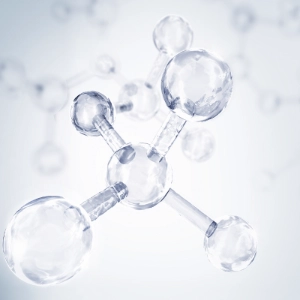
2. Silidine®
Goal: Reduction of redness and red blood vessels
Our products actively help the blood vessels to contract – visibly reducing reddening of the skin. The active ingredient Silidine® is used in Louis Widmer anti-redness products. It is extracted from microalgae and is highly effective in contracting dilated blood vessels. Small reddened veins and redness recede and the vascular walls are strengthened.
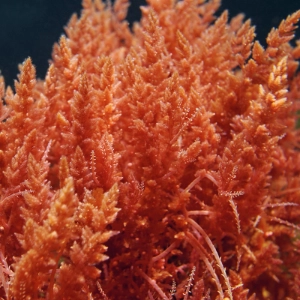
3. Sensamone®
Goal: Soothing of irritated nerve cells
Sensamone® inhibits overreactive pain receptors at their source and is contained in both the skinexpert Anti-Redness Day Emulsion and the Night Emulsion. Sensamone® calms irritated sensory nerve fibres and the unpleasant burning and stinging sensation on the skin subsides. The skin's sense of well-being is visibly and tangibly restored.
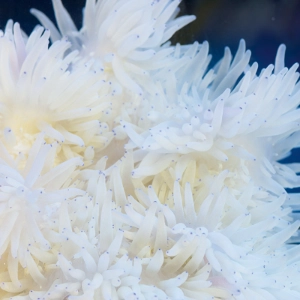
Clinically confirmed effectiveness
82% confirm visible reduction of redness*
91% feel their skin is more regenerated*
86% feel a calming effect*
77% confirm a reduction of small red veins*
82% confirm a strengthened skin barrier*
